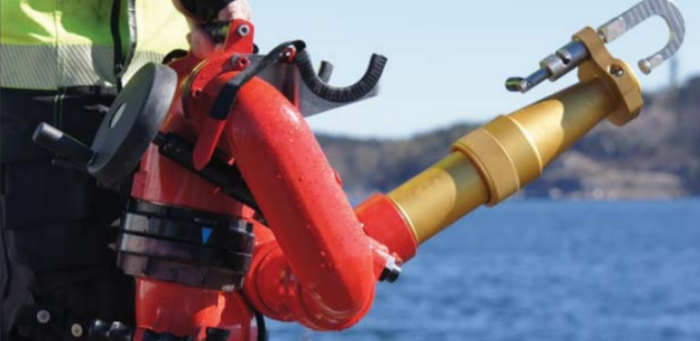In the latest Safety Digest, UK MAIB presents the case of a small fire on a Ro-Ro ship. Repairs were planned during an evening passage, involving hot work inside the boiler. As the discharge of passengers and vehicles had started, the chief engineer informed the safety officer that a small fire had broke out in the boiler.
The incident
A Ro-Ro ferry was operating to a normal schedule with contractors on board to repair an auxiliary boiler. The work was planned to start during an evening passage. The repairs involved hot work inside the boiler.
[smlsubform prepend=”GET THE SAFETY4SEA IN YOUR INBOX!” showname=false emailtxt=”” emailholder=”Enter your email address” showsubmit=true submittxt=”Submit” jsthanks=false thankyou=”Thank you for subscribing to our mailing list”]
Hot work and enclosed space entry permits to work (PTW) were completed by the chief engineer and accepted by both the safety officer and the ship’s master. The safety officer highlighted the importance of maintaining a fire watch as a number of fire detector heads in the engine room were going to be isolated for the duration of the hot work.
The ferry sailed on schedule and work on the boiler was started as planned. When it arrived at its destination port, discharge of passengers and vehicles began. The chief engineer then informed the safety officer that a small fire had occurred in the boiler about an hour earlier while the contractors were using flame-cutting equipment.
Probable cause
Investigations revealed that a portable light unit, used earlier, had been left at the bottom of the boiler and that sparks from the cutting process had caused the unit to ignite. The contractors reacted quickly and extinguished the fire using fire-fighting equipment that were close to the work-site as part of the PTW requirements.
CCTV recording of the period leading up to the incident showed the fire watch moving potentially flammable material away from the area outside the boiler. However, the portable light unit, which was located inside the boiler, was not visible and it was left in place during the hot work.
- It is vital that emergency procedures are followed. Although in this case the fire was successfully extinguished at an early stage, the master needs to be made immediately aware of all incidents that could affect the safety of the passengers, crew and vessel. Sharing of information also allows a review of actions taken and of potential consequences, such as re-ignition.
- The raising of a PTW should always involve conducting a thorough risk assessment. In this case, the likelihood that the flame-cutting process would generate sparks should have prompted a thorough inspection of the surrounding area, both outside and inside the boiler, to identify and remove flammable items.
- Paragraph 14.1.1 of the Code of Safe Working Practices for Merchant Seafarers states: ‘Based on the findings of the risk assessment, appropriate control measures should be put in place to protect those who may be affected…’ The safety officer had cited the fire watch as an important control measure in this case. However, the particular danger posed by flammable items potentially left inside the boiler had not been identified by the fire watch.






























































